Biography of Chevalier Jerry Billing
Born 04/20/1921 Essex Ontario Canada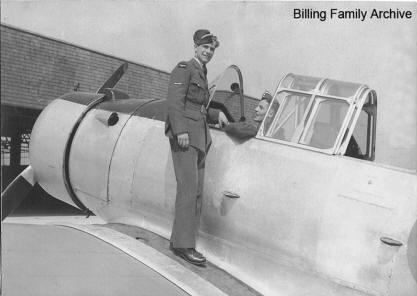
As a young boy he dreamed of flying, after reading books about WWI pilots. When WWII started Jerry knew it was his chance to fly. He joined the RCAF in 1940 as an air gunner ( bomber), and advanced to wireless air gunner because of his eagerness to learn and his proficiency in Morse Code. With Jerry's persistent requests of the training personnel for pilot training, the Commanding Officer finally relented, starting with the required test in Mathematics, which he passed. In London Ontario Jerry learned to fly the Fleet Finch and was one of the first to solo. He moved on to Dunnville Ontario in mid-1941 were he flew Yale aircraft (Jerry soloed the Yale with only two dual trips). With all the ground school completed, he was told he would be an Instructor based in Canada. This was insufficient as a challenge for Jerry, so with great persistence and perseverance, he acquired his fighter pilot status. In 1941 he was sent to the UK ( Tern Hill ) for advanced flight training on the Miles Master. That completed, he advanced to the Hawker Hurricane, and with an above average assessment, he was then posted to a Spitfire training unit. After soloing in a Spitfire MKI Serial K 9929, Jerry requested to join a Spitfire Squadron. (which in the early 40's were reserved for above-average pilots). In 1942, Jerry joined #19 Squadron RAF which was equipped with the Spitfire MKV, flying many types of sorties ( intercept, CAP, etc.).
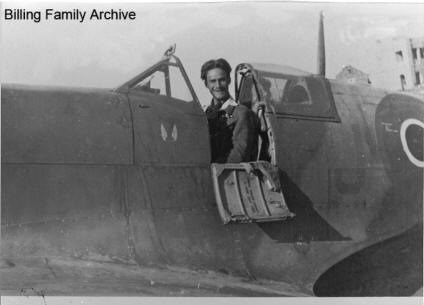 In
October 1942 Jerry volunteered to help defend Malta, which was
surrounded by the enemy and on the verge of defeat.
Launching from HMS Furious in Spitfire MK Vb his small unit
completed a 1200 mile open water flight to Malta to join #185squadron.
Flying daily in many different sorties from bombing
(on-the-job training with a Spitfire ) to aircraft interception.
Jerry saw lots of action and never hesitated to tear into the enemy .In
the RAF during WWII it was required that confirmation of a KILL,
probable, or damage, must be made either by another pilot or recorded on
gun film (unavailable in Malta). Unlike the scoring used by the
Germans, Russians and Yanks, an aircraft destroyed on the ground was NOT
considered a KILL to the RAF .On patrol Dec 8 1942 Jerry was jumped by 3
BF109's and was forced to bail out, later to be plucked from the
Mediterranean by air/sea rescue. In March 1943 on a scramble to intercept
10-plus enemy aircraft, as Jerry attacked 2 BF109's, another BF 109 got
a jump on him and disabled his Spit, forcing him to bail. After
recovering from his injuries, Jerry flew more sorties. When he left
Malta on 19th of May 1943, he did so with the knowledge that he had
superseding the 2-3 month average life span of a fighter pilot in Malta!
During Jerry's time on Malta he was in many air battles against many
different enemy planes, due to the lack of confirmation from other
pilots he didn't claim any kills, but shot up many different enemy
planes, and strafed everything from U-boats to pillboxes. After a month
leave to Canada Jerry returned to the UK to instruct new spitfire pilots
in the art of dog fighting.
In
October 1942 Jerry volunteered to help defend Malta, which was
surrounded by the enemy and on the verge of defeat.
Launching from HMS Furious in Spitfire MK Vb his small unit
completed a 1200 mile open water flight to Malta to join #185squadron.
Flying daily in many different sorties from bombing
(on-the-job training with a Spitfire ) to aircraft interception.
Jerry saw lots of action and never hesitated to tear into the enemy .In
the RAF during WWII it was required that confirmation of a KILL,
probable, or damage, must be made either by another pilot or recorded on
gun film (unavailable in Malta). Unlike the scoring used by the
Germans, Russians and Yanks, an aircraft destroyed on the ground was NOT
considered a KILL to the RAF .On patrol Dec 8 1942 Jerry was jumped by 3
BF109's and was forced to bail out, later to be plucked from the
Mediterranean by air/sea rescue. In March 1943 on a scramble to intercept
10-plus enemy aircraft, as Jerry attacked 2 BF109's, another BF 109 got
a jump on him and disabled his Spit, forcing him to bail. After
recovering from his injuries, Jerry flew more sorties. When he left
Malta on 19th of May 1943, he did so with the knowledge that he had
superseding the 2-3 month average life span of a fighter pilot in Malta!
During Jerry's time on Malta he was in many air battles against many
different enemy planes, due to the lack of confirmation from other
pilots he didn't claim any kills, but shot up many different enemy
planes, and strafed everything from U-boats to pillboxes. After a month
leave to Canada Jerry returned to the UK to instruct new spitfire pilots
in the art of dog fighting.
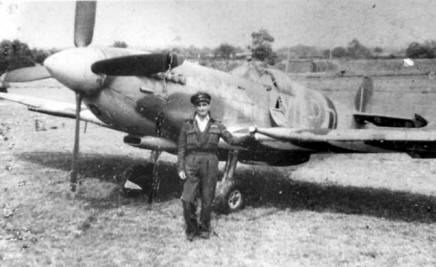
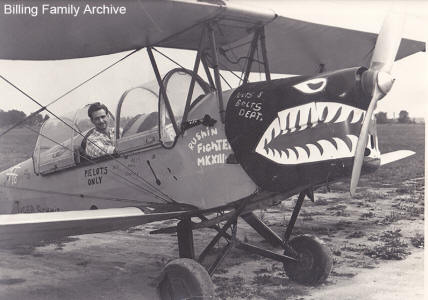
In 1947 Jerry was the chief flying instructor at the Windsor Flying club.
In 1948 Jerry re-enlisted in the RCAF and was based in Trenton to instruct pilots to become instructors were he flew B-25, Lancaster, P-51, Vampire jet aircraft.
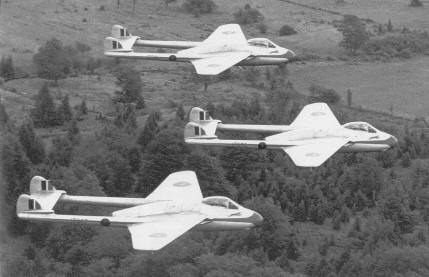
In 1951 Jerry joined the Canadian Jet Demo team the Blue Devils flying in the #2 position in a De Havilland Vampire for the teams last season. Later in 1951 sent to New Brunswick for instructing pilots to fly jets, were he flew the T33, and in 1952 they received their first F86 Sabre jets.
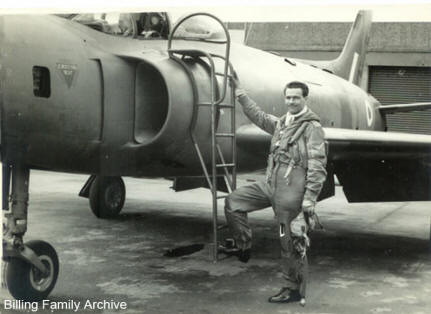
In 1954 Jerry was assigned back to the UK as a exchange officer in their fighter development squadron where he flew the Hawker Hunter, Supermarine Swift, Meteor, Canberra, and Venom. Returning to Canada in 1956 Jerry was behind a desk pushing paperwork for the Defence Command ( not to Jerry's liking ) but he did fly as much as he could, getting checked out on the CF100.
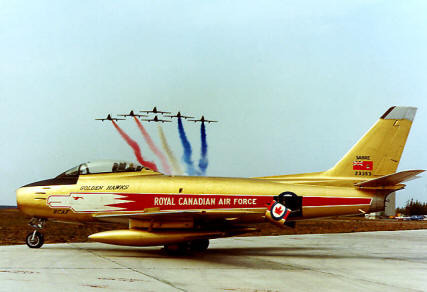
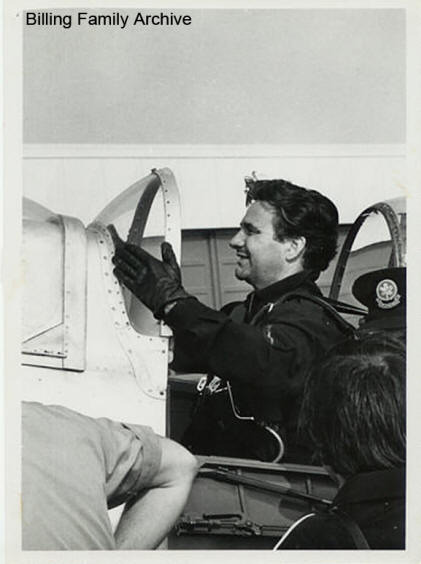
Jerry left the RCAF in 1964 to become a test pilot for DeHavilland, working on all aircraft they were designing atthe time. Jerry travelled the world displaying DeHavilland aircraft for potential customers. During the VietNam war Jerry delivered Caribou aircraft there forthe CIA. After leaving De Havilland Jerry trained a fellowby the name of Don Plumb, a local Windsor businessman, who had bought a dual seat Spitfire (TE308). Jerryworked with Mr. Plumb for many years displaying his warbird fleet at various air shows across North America.
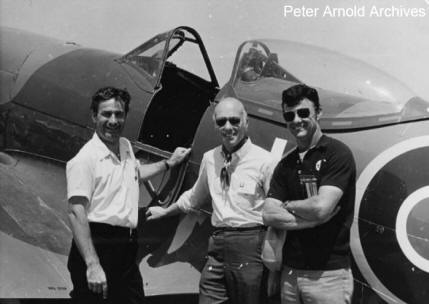
In the early 70's Jerry was contacted by Bill Ross to see if Jerry would be interested in flying a Spitfire Mk IX(Mk923) from California to Chicago to be restored. Jerry and Cliff Robertson came to the agreement that Jerry would be responsible for displaying the spitfire to the public at air shows as living history, and Mr.Robertson would keep it flying financially. From the mid-70's to the mid-90's ( 22.5 years ) Jerry displayed MK923 at many air shows across North America, thrilling thousands of spectators with his skill and grace behind the controls of the Spitfire. In 1984 Jerry flew for Her Majesty the Queen and Prince Philip as a curtain raiser on their visit to Windsor Ontario ( receiving a thankyou letter from the Queen ). In 1992 Jerry passed a unique milestone of 50 consecutive years flying Spitfires (also receiving congratulations from Her Majestythe Queen via letter). In 1994 Jerry retired from flying Spitfire MK923 and the aircraft was sold to Craig McGraw. It is now displayed at the Museum Of Flight, Seattle. In Jerry's career he displayed Spitfires NH188, TE308, SL721 and MK923 for many different owners across North America. Jerry over the years also checked out many pilots on flying a Spitfire.
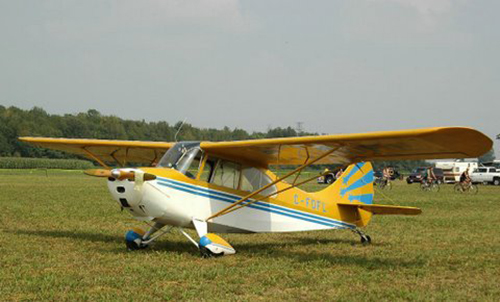
To this day Jerry lives outside Essex Ontario, were he still fly's a 1947 Aeronca Champ from his own grass strip.